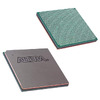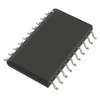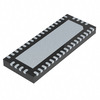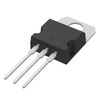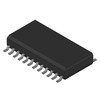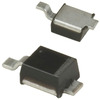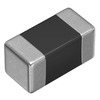Gray Code: How It Works and Why It Matters?
Gray Code, a unique binary encoding system, plays a major role in digital technology by ensuring seamless transitions between states. Unlike traditional binary codes, Gray Code alters only one bit at a time, reducing errors during state changes in digital circuits. This property has made it requisite in applications ranging from error correction and digital communication to position encoding in rotary encoders. In this article, we dig into the notional underpinnings, historical evolution, and practical applications of the Gray Code. By exploring its significance in actual scenarios and the methods used for its generation, we aim to uncover the basic principles that make Gray Code a cornerstone of modern digital systems.Catalog

Overview of Gray Code
Gray Code is a refined binary encoding system characterized by the intriguing property that adjacent codes differ by only a single binary digit. This distinct feature enables a smooth transition between maximum and minimum values with a solitary bit change at any moment. As a result, it is often referred to as cyclic code or reflective code. In the context of digital systems, the importance of accurate code transitions is profound. For instance, when using the conventional 8421 binary code, shifting from 0111 to 1000 prompts all four bits to change at once, which can lead to temporary erroneous states within circuits. Conversely, Gray Code effectively mitigates these issues by ensuring that only one bit is altered at a time, thereby significantly reducing the risk of circuit errors.
The complexities of Gray Code go beyond its ultimate definition; it functions as a vibrant instrument in a variety of applications, such as:
• Error correction
• Digital communication
• Position encoding in rotary encoders
Its implementation is observable in everyday scenarios, such as the development of resilient communication protocols where minimizing the chance of misinterpretation during signal transmission holds great significance.
Features of Gray Code
|
Feature |
Description |
|
Reliability Coding |
Gray code minimizes errors by changing only one bit
during transitions between adjacent values, reducing logic confusion and
current spikes in digital circuits compared to natural binary code. |
|
Error Minimization |
Unlike natural binary code, where all bits may change
(e.g., from decimal 3 to 4), Gray code transitions involve only one bit
change, reducing the risk of notable errors during angular
displacement-to-digital conversions. |
|
Absolute Coding Method |
Gray code uses an absolute encoding method, ensuring
reliability and reducing the possibility of remarkable errors in random data
retrieval. |
|
Single-Step and Cyclic Characteristics |
Gray code's single-step feature ensures only one bit
changes between consecutive codes. Its cyclic nature supports seamless
transitions, enhancing accuracy and reliability. |
|
Self-Complementary and Reflective Features |
The reflective and self-complementary nature simplifies
negation operations and ensures consistency during encoding and decoding. |
|
Variable Weight Code |
Each Gray code bit does not have a fixed weight, making
direct size comparison or arithmetic operations difficult. Conversion to
natural binary code is needed for further processing. |
|
Quasi-Weight Code |
The Gray code's weight is defined as 2i−1(with the lowest
bit i=1), making it suitable for specific applications requiring unique
encoding. |
|
Parity Consistency |
The parity of the decimal equivalent of Gray code matches
the parity of the count of 1s in the code word, ensuring consistency in
parity checks. |
Advanced Timing Stopwatch
|
Decimal |
4-bit natural binary code |
4-digit typical Gray code |
Decimal three Gray code |
Decimal empty six Gray code |
Decimal jump six Gray code |
Step code |
|
0 |
0 |
0 |
10 |
0 |
0 |
0 |
|
1 |
1 |
1 |
110 |
1 |
1 |
1 |
|
2 |
10 |
11 |
111 |
11 |
11 |
11 |
|
3 |
11 |
10 |
101 |
10 |
10 |
111 |
|
4 |
100 |
110 |
100 |
110 |
110 |
1111 |
|
5 |
101 |
111 |
1100 |
1110 |
111 |
11111 |
|
6 |
110 |
101 |
1101 |
1110 |
101 |
11110 |
|
7 |
111 |
100 |
1111 |
1011 |
100 |
11100 |
|
8 |
1000 |
1100 |
1110 |
1001 |
1100 |
11000 |
|
9 |
1001 |
1101 |
1010 |
1000 |
10000 |
10000 |
|
10 |
1010 |
1111 |
---- |
---- |
---- |
---- |
|
11 |
1011 |
1110 |
---- |
---- |
---- |
---- |
|
12 |
1100 |
1010 |
---- |
---- |
---- |
---- |
|
13 |
1101 |
1011 |
---- |
---- |
---- |
---- |
|
14 |
1110 |
1001 |
---- |
---- |
---- |
---- |
|
15 |
1111 |
1000 |
---- |
---- |
---- |
---- |
Development History of Gray Code
|
Aspect |
Details |
|
Initial Concept |
Introduced by Jean-Maurice Baudot in 1880 as a variant of
Gray Code. |
|
Formal Introduction |
Proposed by Frank Gray at Bell Labs in the 1940s. |
|
Purpose |
To reduce errors in signal transmission, especially in
Pulse Code Modulation (PCM) systems. |
|
Patent Details |
Filed by Frank Gray in 1947 and granted in 1953 under the
title "Pulse Code Communication." |
|
Key Evolution |
Gray Code became essential for analog-to-digital
conversion, marking a significant milestone in digital technology. |
|
Early Adoption |
George Stibitz utilized Gray Code in 1941 to develop an
8-element Gray code counter for simplifying digital circuit design and
minimizing errors during state transitions. |
|
Historical Context |
Emerged during the mid-20th century, a period of rapid
technological advancements and high demand for reliable communication
systems. |
|
Significance |
Gray Code bridged theoretical advancements with practical
applications, ensuring accurate data transmission in the growing digital
landscape. |
Conversion Method of Gray Code
The creation of Gray Code employs a recursive technique that takes advantage of its reflective characteristics. This approach not only showcases the sophistication of Gray Code but also reveals its wide-ranging uses in fields such as digital circuit design and error correction, where precision is deeply valued.
Recursive Generation Process
The journey begins with the formation of the initial 2^n code words in the (n+1)-bit Gray Code. These code words are designed to mirror the n-bit Gray Code, with each code prefixed by a 0. This initial step lays out a clear and methodical structure for expanding upon existing sequences. The reflective quality of Gray Code stands out significantly. The subsequent 2^n code words consist of the n-bit Gray Code presented in reverse order, each prefixed by 1. This symmetry not only streamlines the generation process but also bolsters the dependability of code transitions, thereby reducing the chances of errors during bit changes. Such characteristics have found extensive application in areas like rotary encoders and digital communication systems, where the urgency to minimize errors resonates deeply.
Efficient Sequence Generation
The organized nature of this recursive method promotes the effective generation of Gray Code sequences. By harnessing the intrinsic properties of Gray Code, the approach lessens computational complexity. This efficiency proves mostly advantageous in actual systems, where the demand for speed and accuracy often intertwines with the pressures of performance.
Applications of Gray Code
Gray Code finds its place in numerous applications across diverse fields, mostly in angle sensors, machine tools, and automotive brake systems. In these contexts, sensors are tasked with transmitting exact mechanical positions, which is needed for ensuring both safety and performance. For example, a coding disk may be fitted with contacts that produce a 3-bit binary code, mirroring the disk's rotation. The disk's darker sectors correspond to a logic 1 signal, while the lighter sectors indicate logic 0. Utilizing Gray Code for these sectors guarantees that only a single bit changes with each successive code. This characteristic is mostly valuable as it mitigates potential errors stemming from manufacturing discrepancies, thus bolstering the reliability of the sensors.

Gray Code also significantly contributes to the simplification of logic functions via Karnaugh maps. This simplification not only aids in the design of digital circuits but also helps in streamlining complexity and enhancing overall efficiency. Furthermore, Gray Code's relevance extends to problem-solving situations, such as the Nine Serial Problems, where state transitions adhere to Gray Code principles. This connection exemplifies the adaptability of the Gray Code beyond simple numerical representation; it acts as an initial concept in various logical and computational challenges.
In the context of the Tower of Hanoi puzzle, each ring can display two states represented by 0 and 1, together forming a cyclic binary sequence. The number of state changes required to solve this puzzle aligns with the decimal number 341, which is associated with the Gray Code representation of 111111111. This relationship not only highlights the mathematical sophistication of Gray Code but also emphasizes its practical significance in algorithm design and optimization.
About us
ALLELCO LIMITED
Read more
Quick inquiry
Please send an inquiry, we will respond immediately.

A Comprehensive Guide to EEPROM Technology
on December 29th

All About SDRAM: The Backbone of High-Speed Memory Systems
on December 29th
Popular Posts
-

Understanding Power Supply Voltages in Electronics VCC, VDD, VEE, VSS, and GND
on June 13th 24175
-

USB-C Pinout and Features
on June 13th 21286
-

The Ultimate Guide to Wire Color Codes in Modern Electrical Systems
on January 1th 17465
-

TL494 Current-Mode PWM Controller IC
on January 1th 14733
-

Current Divider Circuits and Effective Use of the Divider Formula
on January 1th 13630
-

FET (Field Effect Transistor) Circuit Symbols
Field-Effect Transistors (FETs) are widely used in modern electronics and are found in everything from simple devices to complex digital systems. To work with these transistors effectively, it's helpful to understand the symbols that represent different types of FETs. These symbols do more than just show what the transistors look like—they also provide information about how each transistor works ...on January 1th 13440
-

Quality (Q) Factor: Equations and Applications
The quality factor, or 'Q', is important when checking how well inductors and resonators work in electronic systems that use radio frequencies (RF). 'Q' measures how well a circuit minimizes energy loss and impacts the range of frequencies the system can handle around its main frequency. In systems with inductors, capacitors, and tuned circuits, a higher 'Q' means the circuit focuses more on a spe...on January 1th 13393
-

Understanding and Building Op-Amp Based Peak Detectors
In the world of electronic circuit design, peak detectors are key tools for accurately analyzing and processing signal strengths. These circuits are designed to find and keep the highest signal amplitude, making sure the peak value is precisely captured and held as needed. Peak detectors are important in many fields, from improving audio quality in communication systems to aiding medical diagnoses...on June 13th 12497
-

LM741 Op-Amp: Features, Specifications, and Applications
The LM741 op-amp is a popular and flexible electronic component. This article goes over the pin layout, functions, specs, and different ways the LM741 can be used, while also comparing it to similar models like the LM358.Catalog1. What Is the LM741 Op-Amp?2. The LM741 Pin Configuration3. The LM741 Pin Functions4. Specifications of the LM7415. Features of LM7416. LM741 Circuit Applications7. LM741 ...on June 13th 12034
-

ST-LINK/V2: Pinout, Specifications, and Datasheet
This article takes you through the ST-LINK/V2, a well-regarded tool that amplifies connectivity and functionality. Key topics will cover its pinout configuration, delve into its 3D model, and spotlight specifications. Such understanding expands the horizons of STM microcontrollers in diverse applications. By grasping these interfaces and tools, you can transform embedded systems, opening doors to ...on January 1th 11579

















